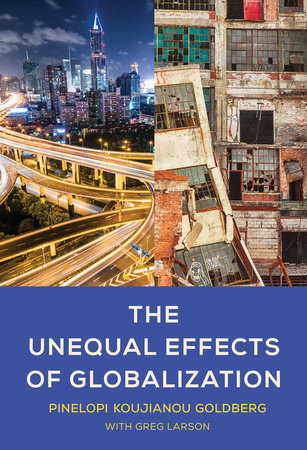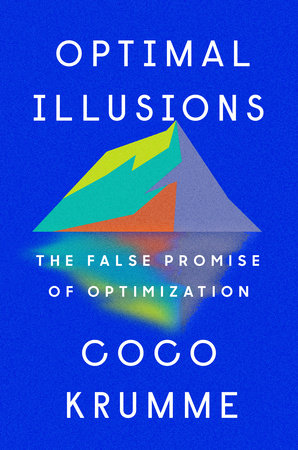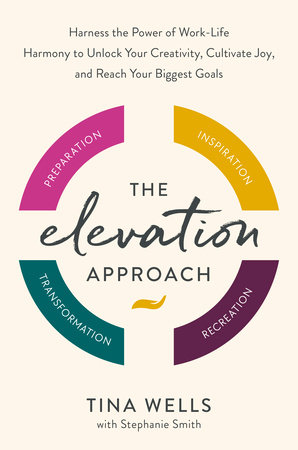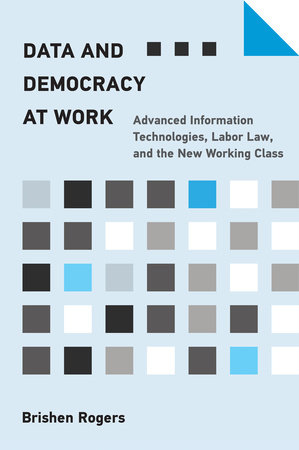Quick Summary
One Sentence Summary
“The Unequal Effects of Globalization” by Pinelopi Koujianou Goldberg provides a critical examination of how globalization impacts societies differently, highlighting the disparities it creates or exacerbates.
Big Idea
Goldberg’s main argument centers on the idea that globalization, while beneficial in many aspects, disproportionately affects various groups, leading to significant economic and social inequalities.
Five Key Ideas
- Economic Disparities: The book delves into how globalization can widen the economic gap between rich and poor countries and individuals.
- Labor Market Effects: It explores the impact of global trade and technology on labor markets, often resulting in job losses or reduced wages in certain sectors.
- Policy Implications: Goldberg discusses the role of government policies in either mitigating or exacerbating the effects of globalization.
- Case Studies: The book includes real-world examples and case studies to illustrate how different regions and industries are affected.
- Global and Local Interplay: It emphasizes the complex interplay between global forces and local realities, showing how this dynamic shapes the outcomes of globalization.
Actionable Advice
Goldberg suggests that to address these inequalities, there needs to be a concerted effort towards more equitable trade policies, educational reforms, and social safety nets.
About the Author
Pinelopi Koujianou Goldberg is a renowned economist, known for her expertise in international trade and development economics, with a focus on the impact of globalization.
Read Next
For further reading on similar topics, consider:
- “Globalization and Its Discontents” by Joseph E. Stiglitz
- “The World is Flat” by Thomas L. Friedman
- “Why Nations Fail” by Daron Acemoglu and James A. Robinson
- “The End of Poverty” by Jeffrey Sachs
- “Bad Samaritans” by Ha-Joon Chang
In Depth
Economic Disparities
Globalization has a complex impact on economies. It’s like a double-edged sword. On one hand, it opens markets, boosts innovation, and increases trade. On the other, it can widen the economic gap, both between and within countries. Goldberg dives deep into this. She doesn’t just skim the surface. She gets into the nitty-gritty of how this all plays out.
Let’s talk about developing countries first. They often get the short end of the stick. They might see some quick cash from globalization, sure. But in the long run, they’re playing catch-up with developed nations. These richer countries have more resources, better tech, and stronger infrastructures. So, while globalization gives developing countries a leg up, it’s not a magic wand.
Goldberg gives a standout example: the textile industry in Bangladesh. When global trade barriers fell, Bangladeshi textiles boomed. But there’s a twist. This boom didn’t necessarily lead to overall economic growth or better living standards. Why? Because the gains weren’t spread evenly. The rich got richer, and the poor didn’t see much change.
This example isn’t just about Bangladesh. It’s a mirror reflecting a global issue. Countries with less economic power often export raw materials or low-cost goods. But the real money? That’s in high-tech, high-value products. Products these countries aren’t making.
Now, let’s zoom in on the effects within countries. It’s not just about rich versus poor nations. It’s also about rich versus poor people. Globalization can make the rich richer and leave the poor behind. This isn’t just a theory. Goldberg backs it up with data and real-life examples.
In one part of the book, she says, “Globalization, in its current form, tends to concentrate wealth in the hands of a few, often at the expense of many.” This quote sums up a big chunk of the problem. When big companies and wealthy individuals gain from globalization, they’re not always sharing the pie. They’re keeping the biggest slices for themselves.
But why does this happen? Goldberg points to a few reasons. One big one is technology. With advances in tech, you need fewer people to do more work. So, jobs can vanish, and wages can stagnate. Another reason is the power of multinational corporations. They can move jobs to where labor is cheapest. This creates a race to the bottom in wages and working conditions.
In short, Goldberg’s deep dive into economic disparities reveals a complex picture. Globalization isn’t just good or bad. It’s both, depending on who you are and where you’re standing. For some, it’s a ladder to wealth. For others, it’s a barrier keeping them from climbing up.
Labor Market Effects
Globalization shakes up labor markets. It’s like throwing a stone into a pond – the ripples hit everywhere. Jobs change, industries evolve, and what worked yesterday might not work tomorrow. Goldberg tackles this head-on, breaking down how global trade and tech advancements stir the pot in the job market.
Picture this: a factory in the U.S. closes because it’s cheaper to produce goods in another country. That’s globalization in action. It’s great for the company saving money, but not so great for the workers losing jobs. This is a classic example of how globalization can hit hard on local labor markets. Goldberg doesn’t just skim over these realities. She puts them front and center.
Take the automotive industry in Detroit. This city was once the heart of American car manufacturing. But as globalization grew, things changed. Companies started moving production overseas. Why? Lower costs, cheaper labor. The result? Job losses and economic decline in Detroit. This story isn’t unique to Detroit or the U.S. It’s a pattern seen worldwide.
Goldberg points out, “The shifting of manufacturing jobs to countries with lower labor costs creates a dilemma. It benefits consumers through lower prices, but it also leads to job displacement and wage stagnation.” This quote nails the paradox of globalization in the labor market. Cheaper goods, sure. But also, lost jobs and flat wages.
The twist here is technology. It’s not just about moving jobs from one country to another. It’s also about jobs disappearing altogether. Automation and AI are game-changers. They can make production faster and cheaper, but they also mean fewer people are needed to do the work.
So, what happens to these workers? Some find new jobs. Others might not. And the new jobs might not pay as well or offer the same security. This isn’t just an issue for individual workers. It ripples out, affecting entire communities and economies.
But it’s not all doom and gloom. Globalization also creates jobs. Think about the tech industry. It’s a global powerhouse, creating millions of jobs worldwide. But there’s a catch. These jobs often need skills that the displaced workers might not have. This leads to a skills gap. Workers need retraining to fit into this new global economy.
In essence, Goldberg’s analysis of labor market effects underlines a crucial point. Globalization isn’t just about countries trading with each other. It’s about how this trade transforms the very nature of work. It’s about who wins and who loses in this shifting landscape. And most importantly, it’s about finding ways to make sure that the benefits of globalization reach more than just the top tier.
Policy Implications
Globalization isn’t just happening. It’s shaped by decisions, by policies. Governments play a big role in how globalization pans out. They can soften the blows or make them harder. Goldberg gets into the thick of this. She talks about how policy choices can either smooth out or sharpen the inequalities caused by globalization.
Think trade policies. They’re like the rules of the game for globalization. Set them one way, and they can protect jobs and industries at home. Set them another way, and they can open up markets and spur competition. Both have upsides and downsides. Goldberg puts it plainly: “Trade policies can be a double-edged sword, fostering growth for some while leaving others behind.”
Here’s a real-world example: agriculture subsidies in the European Union. These subsidies help EU farmers, making it easier for them to compete globally. Sounds good, right? But there’s a flip side. These subsidies can hurt farmers in developing countries. They can’t compete with the artificially low prices created by these subsidies. So, they lose out, even in their own markets.
It’s not just about trade policies, though. It’s also about things like education and social safety nets. These can make a big difference in how people adapt to globalization. Good education systems can prep people for the new kinds of jobs globalization brings. Strong social safety nets can catch people when they lose out in the global market.
But here’s the catch. Not all countries have the resources or the will to put these policies in place. And even when they do, it’s not a one-size-fits-all solution. What works in one country might not work in another. Goldberg emphasizes this, saying, “Effective policy responses to globalization require a deep understanding of local contexts and needs.”
The point Goldberg makes is clear. Policy matters. A lot. It can shape who wins and who loses in the game of globalization. It’s not just about the market doing its thing. It’s about how governments react to and shape that market.
In a nutshell, Goldberg’s exploration of policy implications is a wake-up call. It shows that if we want globalization to work better for more people, we need smart, sensitive policies. Policies that recognize the complexities and uneven impacts of globalization. Policies that don’t just ride the wave of globalization, but steer it towards more equitable shores.
Case Studies
Real stories, real impacts. That’s what Goldberg’s case studies bring to the table. They’re not just stats and theories. They’re about how globalization plays out on the ground, in people’s lives. Each case study is a snapshot, a real-world example of the broader points she’s making.
Take the story of Vietnam’s coffee industry. It’s a classic example of how global markets can both boost and challenge a country. Vietnam, in a bid to be a global player in coffee production, ramped up its coffee cultivation. This move skyrocketed them to the second-largest coffee producer in the world. Impressive, right?
But here’s the twist. This success wasn’t all smooth sailing. The rapid expansion led to overproduction. Coffee prices plummeted. Farmers, who had bet everything on coffee, faced tough times. Goldberg puts it starkly: “Vietnam’s coffee boom is a cautionary tale of how global market integration, while beneficial, can also lead to vulnerability and instability.”
This case study isn’t just about Vietnam or coffee. It’s a bigger picture thing. It shows how countries, especially developing ones, can be at the mercy of global markets. They might find a niche, like Vietnam did with coffee. But if they lean too hard into it, they risk everything on the ups and downs of global demand and prices.
The Vietnam case is just one of many in Goldberg’s arsenal. She pulls examples from all over the world. Each one highlights a different aspect of globalization. Some show success stories. Others show cautionary tales. But all of them make the same point. Globalization is complex. It’s not just good or bad. It’s a mix, with outcomes that can shift quickly.
Through these case studies, Goldberg isn’t just throwing information at us. She’s showing us the human side of globalization. These aren’t just economic trends. They’re stories about people and communities trying to navigate the global market.
In sum, Goldberg’s use of case studies brings her arguments to life. They ground her points in reality, in the actual experiences of countries and people grappling with the forces of globalization. They show that understanding globalization isn’t just about graphs and numbers. It’s about understanding the real-world stories behind those numbers.
Global and Local Interplay
Globalization’s not just a big, faceless force. It’s personal. It hits home, literally. Goldberg’s got a sharp eye for how global trends mesh with local realities. It’s about how big, worldwide shifts play out in your neighborhood, your job, your life.
Picture this: A tech giant sets up shop in a small town. It’s global meets local. The town’s economy gets a jolt. Jobs pop up. But it’s not all rosy. Local businesses might struggle against this new giant. The town’s culture shifts. This is the essence of the global-local interplay.
Goldberg gives a solid example with the rise of call centers in India. Global demand for English-speaking customer service created a boom. Young Indians found new job opportunities. But it’s deeper than just jobs. This boom affected local cultures, lifestyles, even sleep patterns, with workers adapting to time zones halfway across the world.
She points out, “The global-local interplay is a dance of opportunities and challenges. It reshapes communities in ways that are often unpredictable and complex.” This quote nails it. It’s a dance, a back-and-forth between global trends and local lives.
It’s not just about economics. It’s cultural, social, even political. Take cultural influences. Global media streams into local communities, bringing new ideas and ways of life. But it can also drown out local cultures. People start grappling with questions of identity and tradition in the face of global influences.
Then there’s the political angle. Global issues like climate change or trade agreements become local challenges. Governments and communities have to navigate these waters, balancing global pressures with local needs and values.
Goldberg doesn’t just stop at describing this interplay. She dives into the nuances. How does a global trend like remote work affect different communities? How do local traditions shape the way global issues are addressed?
In short, Goldberg’s exploration of the global-local interplay is a deep dive into the heart of globalization. It’s not just about the movement of goods, money, or services. It’s about the movement of ideas, cultures, and values. It’s about how our local worlds are shaped and reshaped by forces that span the globe.
This key idea is a reminder that globalization is not a one-way street. It’s a complex network of interactions, where the global and the local continuously influence and reshape each other. It’s about understanding that every global trend has a local face, and every local issue can have global implications.
Actionable Advice
- Educate Yourself: Stay informed about global trends and how they impact local economies and cultures. Knowledge is power.
- Support Local: Buy from local businesses. It helps balance the scales against global giants.
- Learn New Skills: The job market is changing. Pick up skills that are in demand globally.
- Advocate for Fair Policies: Push for trade and economic policies that support fair wages and working conditions.
- Embrace Diversity: Globalization brings different cultures together. Be open and learn from them.
- Be Adaptable: The world is changing fast. Flexibility in work and life is key.
- Reduce Environmental Impact: Globalization affects the environment. Do your part in reducing your carbon footprint.
- Vote Wisely: Support leaders who understand and can navigate the complexities of globalization.
- Use Technology Wisely: Leverage technology to stay connected and competitive in a globalized world.
- Network Internationally: Build connections across borders. It can open up new opportunities and perspectives.
About the Author
Pinelopi Koujianou Goldberg is a renowned economist, specializing in international trade and development economics. She’s a former Chief Economist at the World Bank and a professor at Yale University. Goldberg’s work often focuses on the impacts of globalization, particularly on developing countries. She’s known for her deep dives into how trade policies affect economies and societies. Her approach is data-driven, yet empathetic, acknowledging the human side of economics. Goldberg champions the need for equitable economic policies that consider the vulnerable. Her research is influential, shaping discussions on trade and development globally. She advocates for policies that bridge the gap between rich and poor, emphasizing education and technology’s role in economic growth. Goldberg’s belief in data’s power to inform better policy decisions is a cornerstone of her work. She’s a voice for the marginalized in economic debates, always pushing for a more inclusive approach to globalization.
Read These Next
You might like these similar books
- “Globalization and Its Discontents” by Joseph E. Stiglitz
- “The World is Flat” by Thomas L. Friedman
- “Why Nations Fail” by Daron Acemoglu and James A. Robinson
- “The End of Poverty” by Jeffrey Sachs
- “Bad Samaritans” by Ha-Joon Chang
FAQ
Q: What is the main theme of the book?
A: The book focuses on the varying impacts of globalization, highlighting economic and social disparities it creates.
Q: Who is the target audience for this book?
A: It’s aimed at readers interested in economics, globalization, and its socio-economic effects, including students, academics, and policy makers.
Q: Does the book offer solutions to the problems it discusses?
A: Yes, it suggests policy changes and individual actions to mitigate the negative effects of globalization.
Q: Is the book based on empirical data or theoretical analysis?
A: The book combines both empirical data and theoretical analysis to examine the effects of globalization.
Q: Can beginners in economics understand this book?
A: While the book is detailed, it’s written in a way that is accessible to beginners with a basic understanding of economics.
Q: Does the author discuss specific countries or regions?
A: Yes, the book includes case studies from various countries to illustrate the diverse impacts of globalization.
Q: Are there any prerequisites to understanding the content of the book?
A: A basic understanding of economics and globalization concepts is helpful but not strictly necessary.







